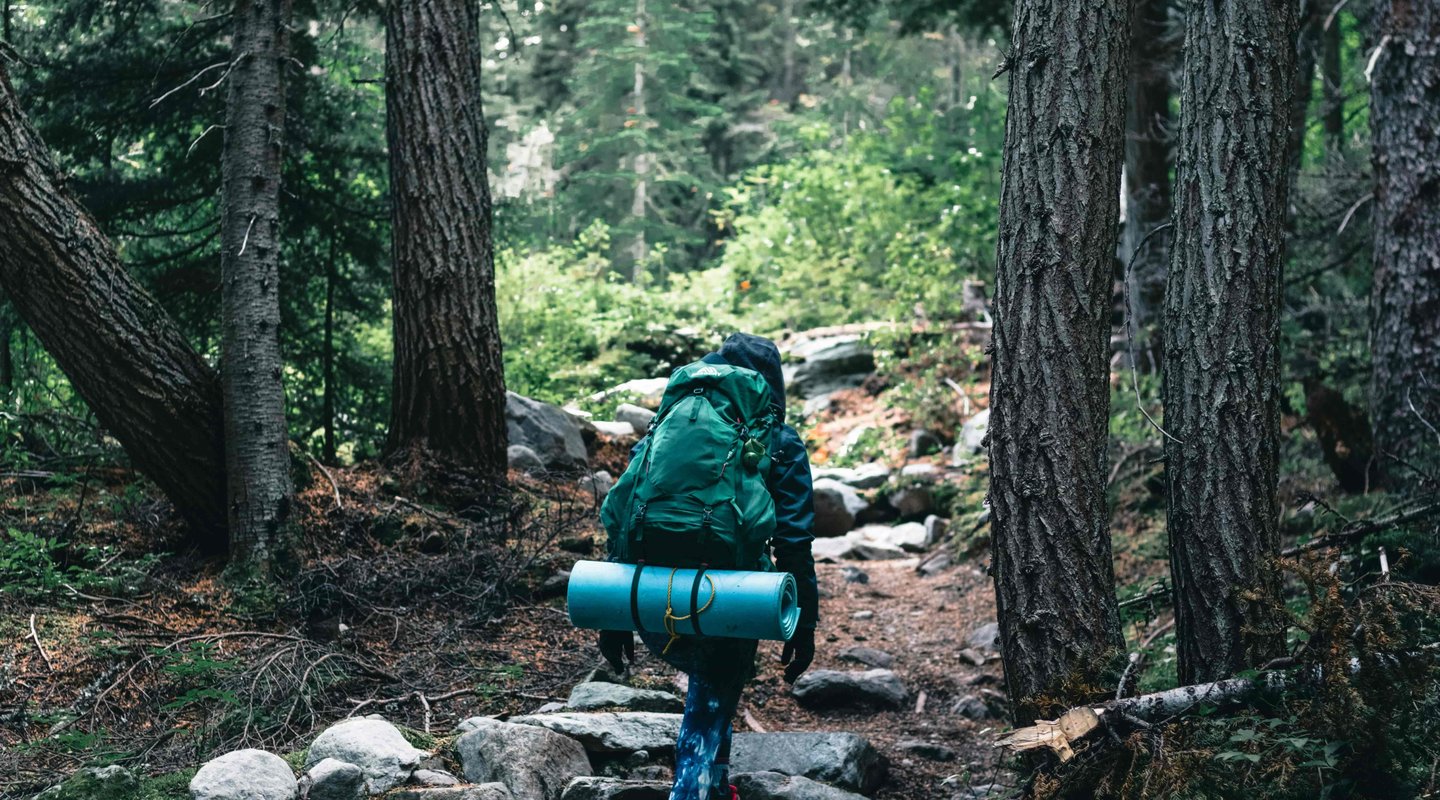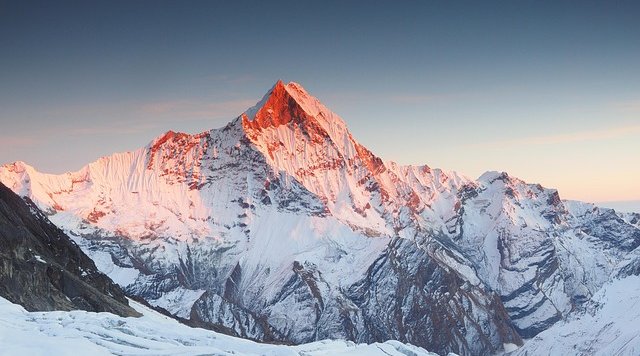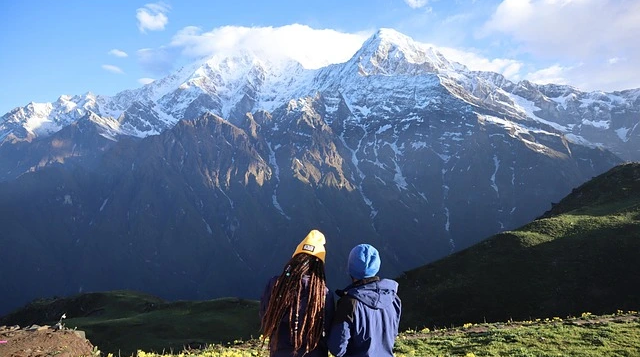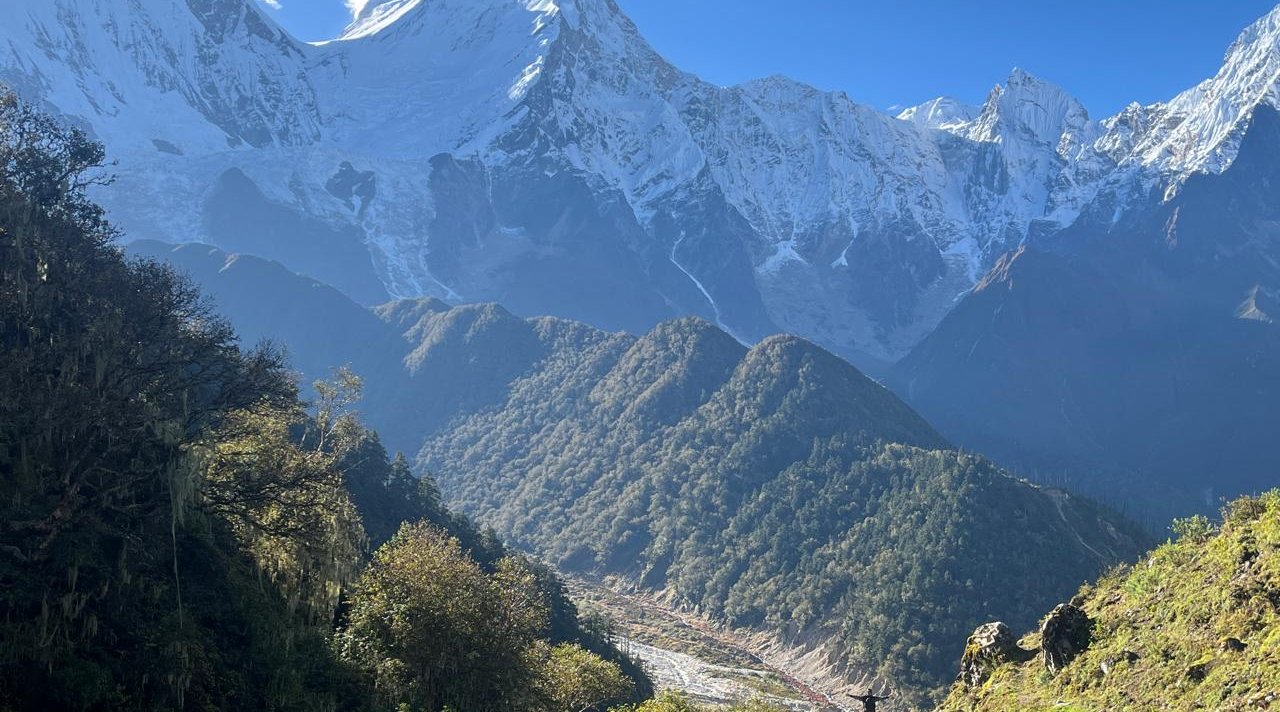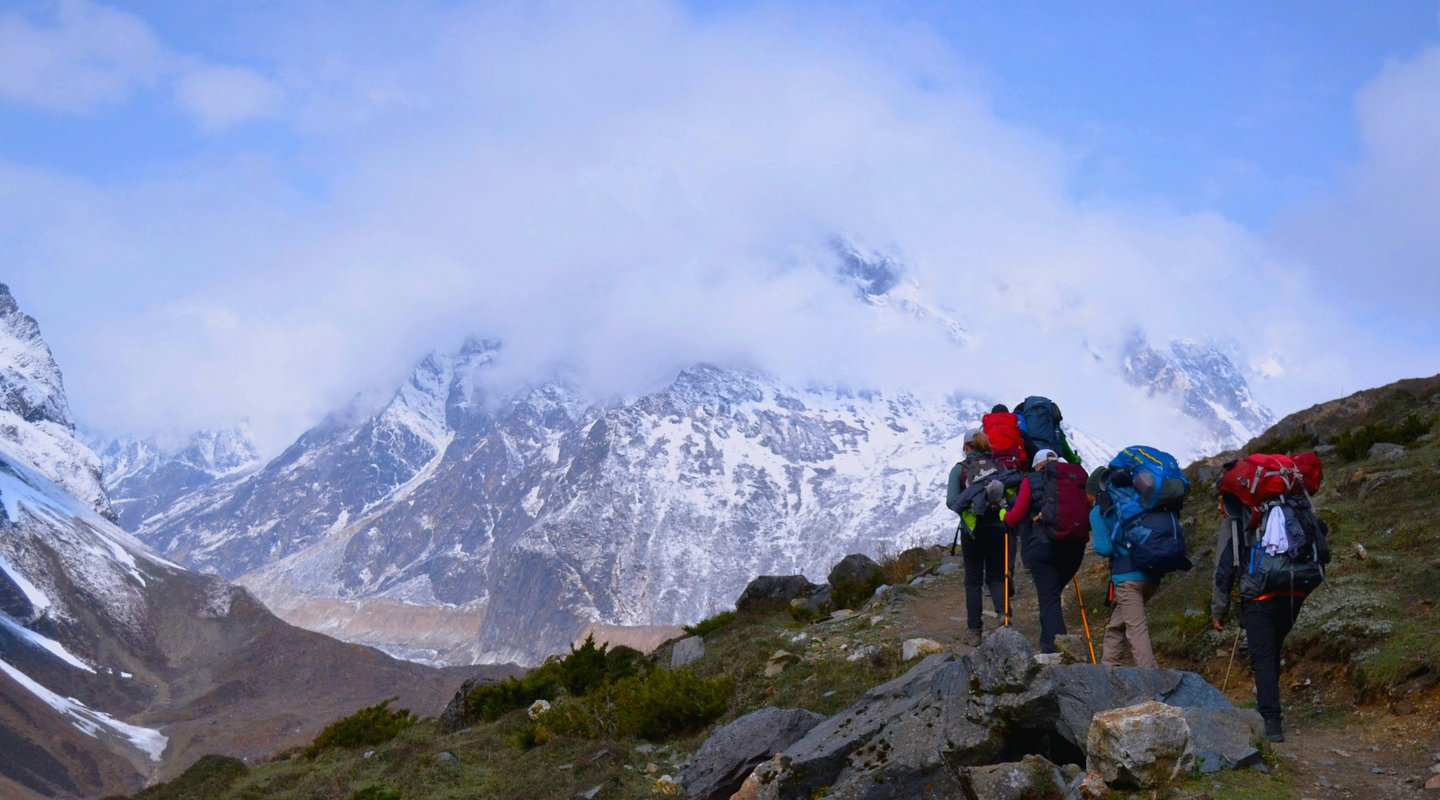Standing at 4,130 meters, the North Annapurna Base Camp presents trekkers with breathtaking Himalayan vistas and formidable challenges that demand meticulous preparation. The success of your trek hinges on having the right Annapurna Base Camp trekking essentials, as unpredictable weather patterns and high-altitude conditions can transform a dream adventure into a dangerous ordeal. This comprehensive North Annapurna Base Camp gear checklist serves as your definitive guide, ensuring you're equipped for everything from sub-zero nights to unexpected afternoon downpours.
Whether you're a first-time Himalayan trekker or a seasoned mountaineer, the unique demands of the North Annapurna route require specific high-altitude hiking gear tailored to its challenging terrain and variable climate. From choosing the perfect thermal layers for trekking to selecting durable trekking gear Nepal adventurers trust, this guide covers every essential item you'll need for a safe and successful journey to one of Nepal's most spectacular destinations.
Table of Contents
- Essential Clothing: Layering for Variable Conditions
- Technical Gear: Camping and Trekking Essentials
- Safety Equipment: Preparing for Emergencies
- Seasonal Adjustments: Spring vs. Autumn
- Additional Considerations for Trek Success
- Conclusion: Your Complete Gear Strategy
Essential Clothing: Layering for Variable Conditions
The foundation of any successful Annapurna trail preparation tips begins with understanding the three-layer clothing system. This strategic approach to layering clothing for high-altitude trekking allows you to adapt quickly to temperature fluctuations that can range from 20°C during sunny afternoons to -10°C on cold nights at base camp.
Base Layer: Moisture Management
Your base layer serves as the critical first line of defense against hypothermia. Choose moisture-wicking materials that pull sweat away from your skin, keeping you dry and warm even during strenuous climbs.
Essential Base Layer Items:
- 2-3 long-sleeve thermal shirts (merino wool or synthetic)
- 2-3 thermal underwear bottoms
- 4-5 pairs of moisture-wicking underwear
- Sports bras for women (quick-dry material)
The best base layers for cold-weather hiking clothing combine lightweight construction with superior insulation properties. Merino wool offers natural odor resistance and temperature regulation, while synthetic materials dry faster and cost less.
Insulation Layer: Warmth Without Weight
The middle layer traps warm air close to your body while allowing moisture to escape. This layer becomes crucial during rest breaks and evening temperatures at higher elevations.
Key Insulation Pieces:
- Fleece jacket (200-300 weight)
- Down or synthetic insulated jacket
- Fleece or soft-shell pants
- Insulated vest (optional but recommended)
When selecting insulation for your Nepal trekking packing guide, prioritize compressibility and warmth-to-weight ratio. A quality down jacket rated for -10°C serves double duty as both an active layer and emergency warmth source.
Outer Shell: Weather Protection
Your outer layer shields you from wind, rain, and snow – common occurrences on the Annapurna weather conditions you'll encounter. This layer must balance waterproofing with breathability to prevent internal condensation.
Critical Shell Components:
- Waterproof/breathable jacket with hood
- Waterproof pants with side zips
- Lightweight rain poncho (backup)
- Pack rain cover
Investing in quality waterproof hiking gear proves essential when facing unexpected storms or crossing streams. Look for jackets with pit zips for ventilation and reinforced shoulders for backpack wear.
Extremities and Accessories
Protecting your extremities prevents frostbite and maintains overall body temperature. These often-overlooked items can make the difference between comfort and misery on the trail.
Complete Accessories List:
- Sun hat with neck protection
- Warm beanie or balaclava
- Buff or neck gaiter (2 recommended)
- Liner gloves plus insulated gloves
- 5-6 pairs of trekking socks
- 2-3 pairs of liner socks
- Gaiters for snow/mud protection
Technical Gear: Camping and Trekking Essentials
Beyond clothing, your lightweight trekking equipment forms the backbone of daily trail life. Each piece must earn its place in your pack through functionality, durability, and weight efficiency.
Footwear: Your Foundation
Selecting the best hiking boots for Annapurna trails requires balancing support, traction, and comfort. Your feet will carry you across varied terrain including rocky paths, muddy sections, and potentially snowy passes.
Footwear Essentials:
- Broken-in trekking boots (waterproof recommended)
- Camp shoes or sandals
- Microspikes or crampons (seasonal)
- Extra laces
Quality boots should provide ankle support, aggressive tread patterns, and waterproof construction. Begin breaking them in at least two months before departure to prevent blisters.
Backpack Systems
Your trekking backpack recommendations Annapurna should center on capacity, comfort, and accessibility. Most trekkers find 40-60 liter packs ideal for the North Annapurna route.
Pack Requirements:
- Main trekking backpack (40-60L)
- Durable daypack for North Annapurna (20-30L)
- Waterproof pack liner
- Compression sacks for organization
Look for packs with adjustable torso lengths, padded hip belts, and multiple access points. A separate daypack proves invaluable for summit day and village explorations.
Trekking Poles: Stability and Endurance
Understanding the benefits of trekking poles for Annapurna reveals why experienced trekkers consider them essential. These tools reduce knee impact by 25% and provide crucial stability on steep descents.
Pole Selection Criteria:
- Adjustable length for varied terrain
- Shock absorption for joint protection
- Comfortable grip materials
- Carbide or rubber tips
Quality trekking poles for mountain trails transform challenging sections into manageable segments, especially when navigating the notorious stone steps common on Annapurna routes.
Sleeping Systems
Your sleeping gear for cold Annapurna nights determines rest quality and recovery. Inadequate sleep systems lead to exhaustion and increased altitude sickness risk.
Sleep Essentials:
- Sleeping bag rated to -15°C
- Sleeping pad with R-value 4+
- Silk or fleece liner (adds 5-10°C)
- Inflatable pillow
Consider a lightweight sleeping bag for Himalayan treks that balances warmth with packability. Down offers superior warmth-to-weight but loses insulation when wet, while synthetic maintains warmth even when damp.
Hydration and Nutrition
Proper hydration systems for Himalayan treks prevent altitude sickness and maintain energy levels. The dry mountain air and physical exertion demand 3-4 liters daily intake.
Hydration Equipment:
- 3L hydration bladder
- 2 wide-mouth water bottles
- Water purification tablets/filter
- Electrolyte supplements
- Insulated bottle for hot drinks
Safety Equipment: Preparing for Emergencies
Your trekking safety accessories provide insurance against the unexpected. The remote nature of the North Annapurna route means self-sufficiency in medical emergencies.
First Aid and Medications
A comprehensive first aid kit tailored to high-altitude camping essentials addresses common trail ailments and emergency situations.
Medical Essentials:
- Altitude sickness medication (Diamox)
- Pain relievers and anti-inflammatories
- Bandages and blister treatment
- Antibiotics (consult doctor)
- Antidiarrheal medication
- Thermometer
- Antiseptic wipes
- Medical tape and gauze
- Personal prescription medications
Navigation and Communication
While trails are generally well-marked, navigation tools for Himalayan treks provide confidence and safety, especially in poor visibility conditions.
Navigation Equipment:
- Detailed topographic maps
- GPS device or smartphone with offline maps
- Compass
- Whistle
- Headlamp plus spare
- Emergency satellite communicator
Modern navigation tools for North Annapurna trails combine traditional map-reading skills with GPS technology for comprehensive route finding.
Emergency Gear
Preparing for worst-case scenarios with proper high-altitude trekking safety tips can save lives when conditions deteriorate rapidly.
Critical Emergency Items:
- Emergency bivy or space blanket
- Fire starter kit
- Multi-tool or knife
- Duct tape (wrapped on poles)
- Cable ties
- Safety pins
- Carabiners
Seasonal Adjustments: Spring vs. Autumn
Understanding seasonal variations helps refine your packing for unpredictable Annapurna weather. Each season presents unique challenges requiring specific gear modifications.
Spring Trek Considerations (March-May)
Spring brings warmer temperatures but increased precipitation. Your weather-proof gear for Annapurna trek needs enhancement during this season.
Spring-Specific Additions:
- Extra waterproofing for all gear
- Lighter sleeping bag (rated to -10°C)
- Mosquito repellent
- Quick-dry clothing
- Mud gaiters
The rhododendron blooms compensate for occasional rain, but proper Annapurna Base Camp clothing checklist adjustments ensure comfort despite moisture.
Autumn Trek Requirements (September-November)
Autumn offers clearer skies but colder temperatures, especially at altitude. Your packing for Annapurna Base Camp winter trek preparations apply here.
Autumn Enhancements:
- Warmer sleeping bag (-15°C to -20°C)
- Additional insulation layers
- Heavier gloves and mittens
- Thermal flask for hot drinks
- Lip balm with SPF
The crystal-clear mountain views reward those prepared for frigid mornings and cold nights.
Additional Considerations for Trek Success
Personal Care and Hygiene
Maintaining hygiene on the trail requires specific essential toiletries for Himalayan trekking that function in cold, water-scarce environments.
Hygiene Essentials:
- Biodegradable soap
- Quick-dry towel
- Toilet paper and trowel
- Hand sanitizer
- Wet wipes
- Sunscreen (SPF 50+)
- Toothbrush and paste
- Feminine hygiene products
Electronics and Documentation
Modern trekking incorporates technology for safety and memories while respecting the mountain environment.
Electronic Necessities:
- Camera with extra batteries
- Power bank (20,000mAh+)
- Solar charger (optional)
- Headphones
- Plastic bags for protection
- Universal adapter
Budget and Eco-Friendly Options
Exploring affordable trekking gear for Annapurna and eco-friendly trekking gear for Nepal allows responsible trekking within budget constraints.
Cost-Saving Strategies:
- Rent expensive items in Kathmandu
- Buy generic brands for consumables
- Share gear with trekking partners
- Choose synthetic over down for budget options
Sustainable Choices:
- Reusable water bottles over disposable
- Biodegradable soaps and toiletries
- Solar charging options
- Leave-no-trace principles
Gear Organization and Packing
Implementing packing light for North Annapurna trek strategies maximizes efficiency and minimizes strain.
Packing Principles:
- Use compression sacks for clothing
- Keep daily essentials accessible
- Distribute weight evenly
- Waterproof everything
- Label stuff sacks
Conclusion: Your Complete Gear Strategy
Success on the North Annapurna Base Camp trek depends on thoughtful preparation and quality gear selection. This comprehensive North Annapurna Base Camp gear checklist ensures you're equipped for every challenge the mountains present, from sub-zero nights to unexpected weather changes.
Remember, proper gear is an investment in both safety and enjoyment. The mountains reward the prepared – with this complete guide, you're ready to create unforgettable memories on your Himalayan adventure.
Ready to transform your trekking dreams into reality? Book your expertly guided North Annapurna Base Camp trek today and let our experienced team handle the logistics while you focus on the incredible journey ahead.
Contact Information:

